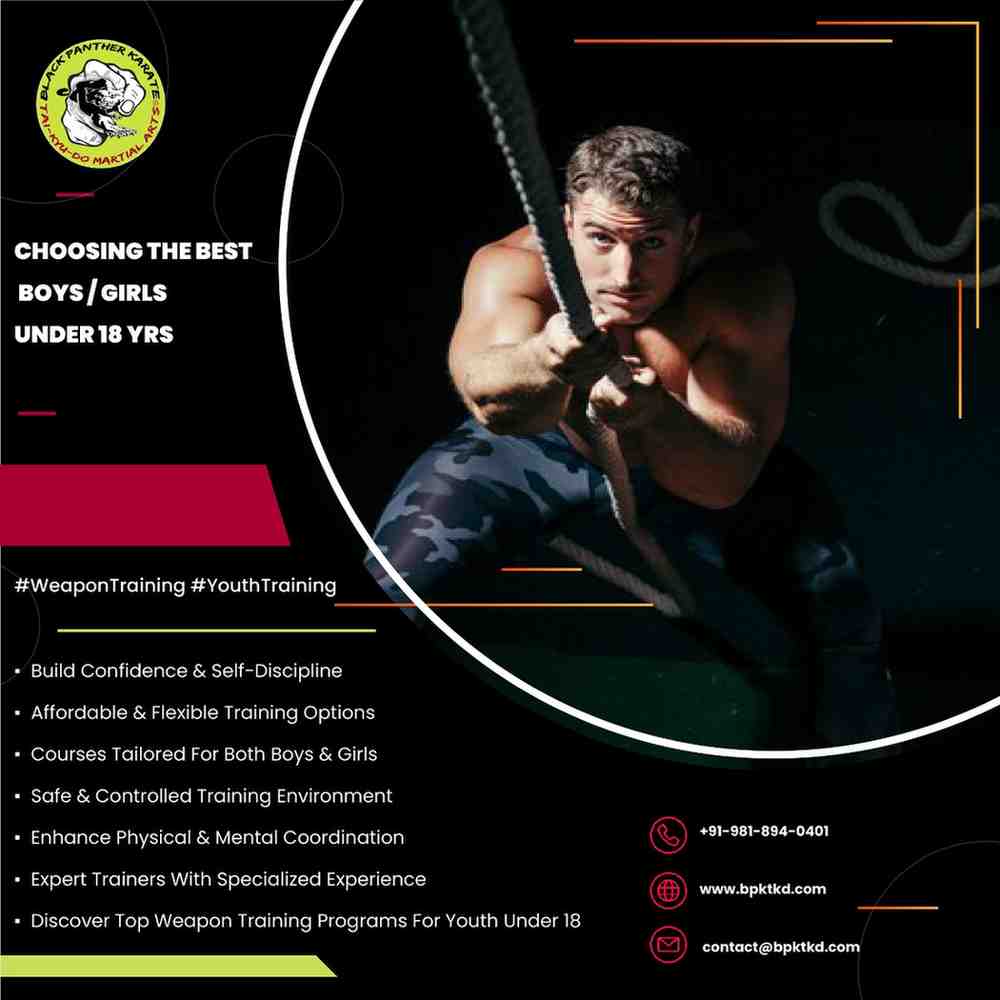
Introduction
In today’s world, where self-defense and personal safety are increasingly prioritized, weapon training can be an essential skill for both boys and girls under 18 years. Whether it’s for self-defense, sports, or discipline, choosing the right type of weapon training is crucial. This blog will guide you through the factors to consider and the best options available for weapon training for young individuals.
Factors to Consider
Before diving into the types of weapon training, it’s important to consider several factors that will influence your decision:
Age and Maturity: The maturity level and physical capabilities of the child are crucial. Younger children may require simpler, less dangerous forms of training.
Purpose of Training: Determine if the training is for self-defense, sports, recreational purposes, or discipline and focus development.
Safety: Ensure the training program has strict safety protocols and qualified instructors.
Interest: The child’s interest and enthusiasm for the type of weapon training is vital for sustained participation and growth.
Legal and Ethical Considerations: Be aware of the legalities surrounding weapon training for minors in your region.
Types of Weapon Training
Martial Arts Weapons: Traditional martial arts offer various weapon training options that are great for discipline, self-defense, and fitness.
Bo Staff: Suitable for younger children due to its non-lethal nature and focus on control and form.
Nunchaku: Requires good coordination and is typically recommended for older children or those with more advanced skills.
Kali/Eskrima: Filipino martial arts focusing on stick fighting, beneficial for developing hand-eye coordination and reflexes.
Archery: A sport that builds concentration, patience, and precision. It’s relatively safe and suitable for children of various ages, provided they have proper supervision.
Fencing: Ideal for developing agility, strategy, and sportsmanship. Fencing is a well-regulated sport with a strong emphasis on safety, making it suitable for kids.
Airsoft and Paintball: These activities simulate real-world combat scenarios and are great for teamwork and strategic thinking. However, they require stringent safety measures and supervision.
Shooting Sports: Involves training with firearms such as rifles or pistols in a controlled, safe environment. This should be reserved for older teens and only in regions where it is legally permitted and under expert supervision.
Benefits of Weapon Training
Self-Defense Skills: Provides practical skills to defend oneself in dangerous situations.
Discipline and Focus: Training often involves rigorous practice, which fosters discipline and enhances focus.
Physical Fitness: Many forms of weapon training improve strength, agility, and overall fitness.
Confidence and Self-Esteem: Mastering a skill can significantly boost a child’s confidence and self-esteem.
Mental Toughness: Helps in developing resilience and the ability to stay calm under pressure.
Choosing the Right Program
When selecting a weapon training program, consider the following steps:
Research: Look for reputable schools or instructors with certified backgrounds.
Trial Classes: Many schools offer trial classes; take advantage of these to see if it’s a good fit for your child.
Talk to Instructors: Ensure they have experience working with children and a strong focus on safety.
Observe a Class: Watching a session can give you insight into the training style and environment.
Check Reviews and References: Feedback from other parents and students can be invaluable.
Conclusion
Choosing the best weapon training for boys and girls under 18 years involves careful consideration of several factors, including safety, purpose, and the child’s interest. With the right approach, weapon training can be a valuable and enriching activity, teaching important life skills while ensuring safety and enjoyment. Whether it’s through martial arts, archery, fencing, or other forms of training, the key is to provide a supportive and structured environment where young individuals can thrive.

